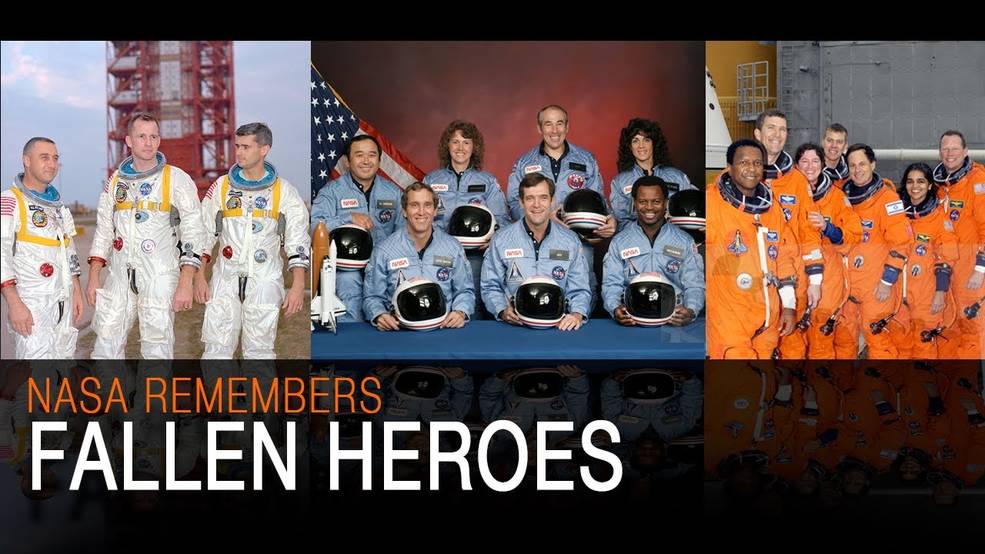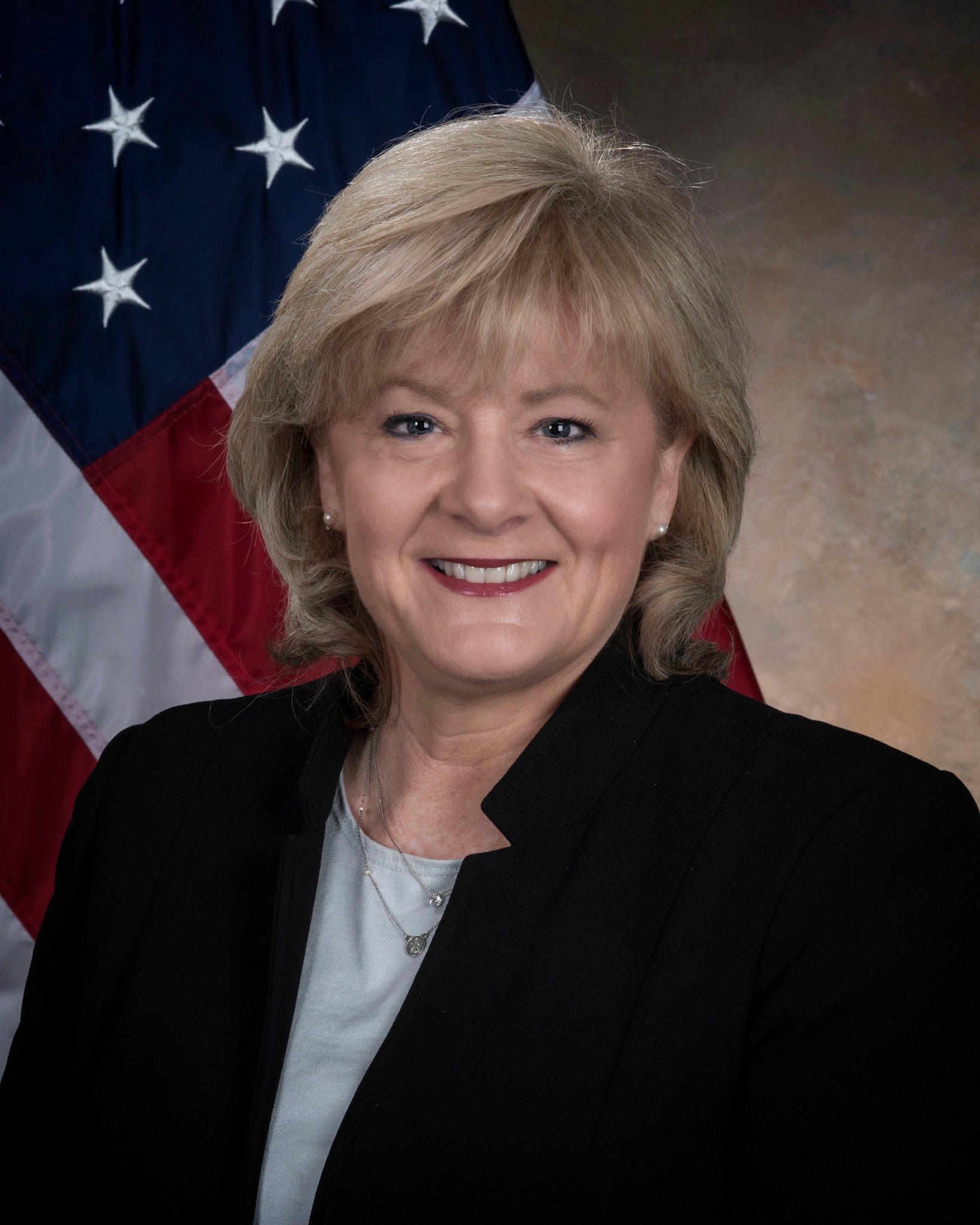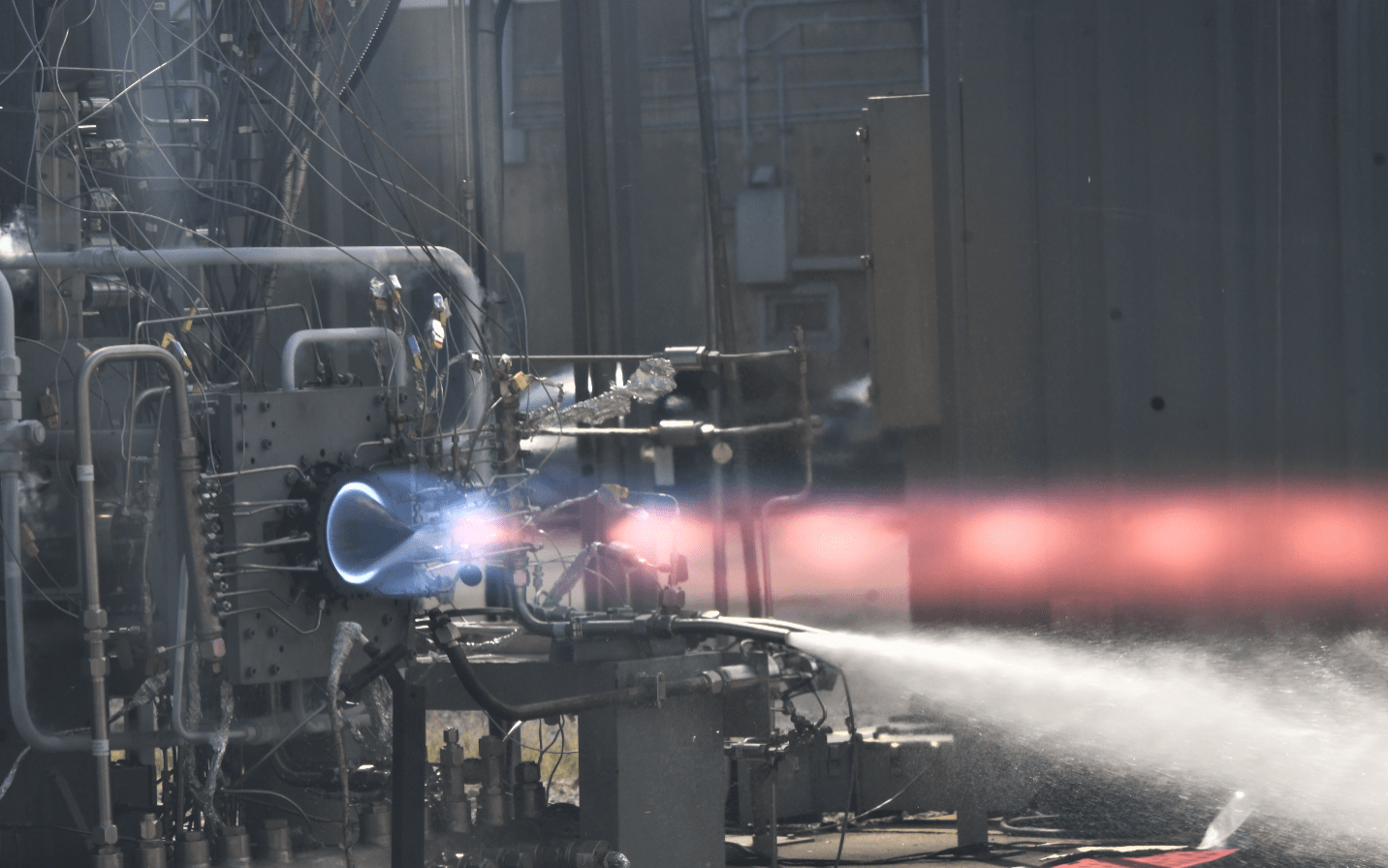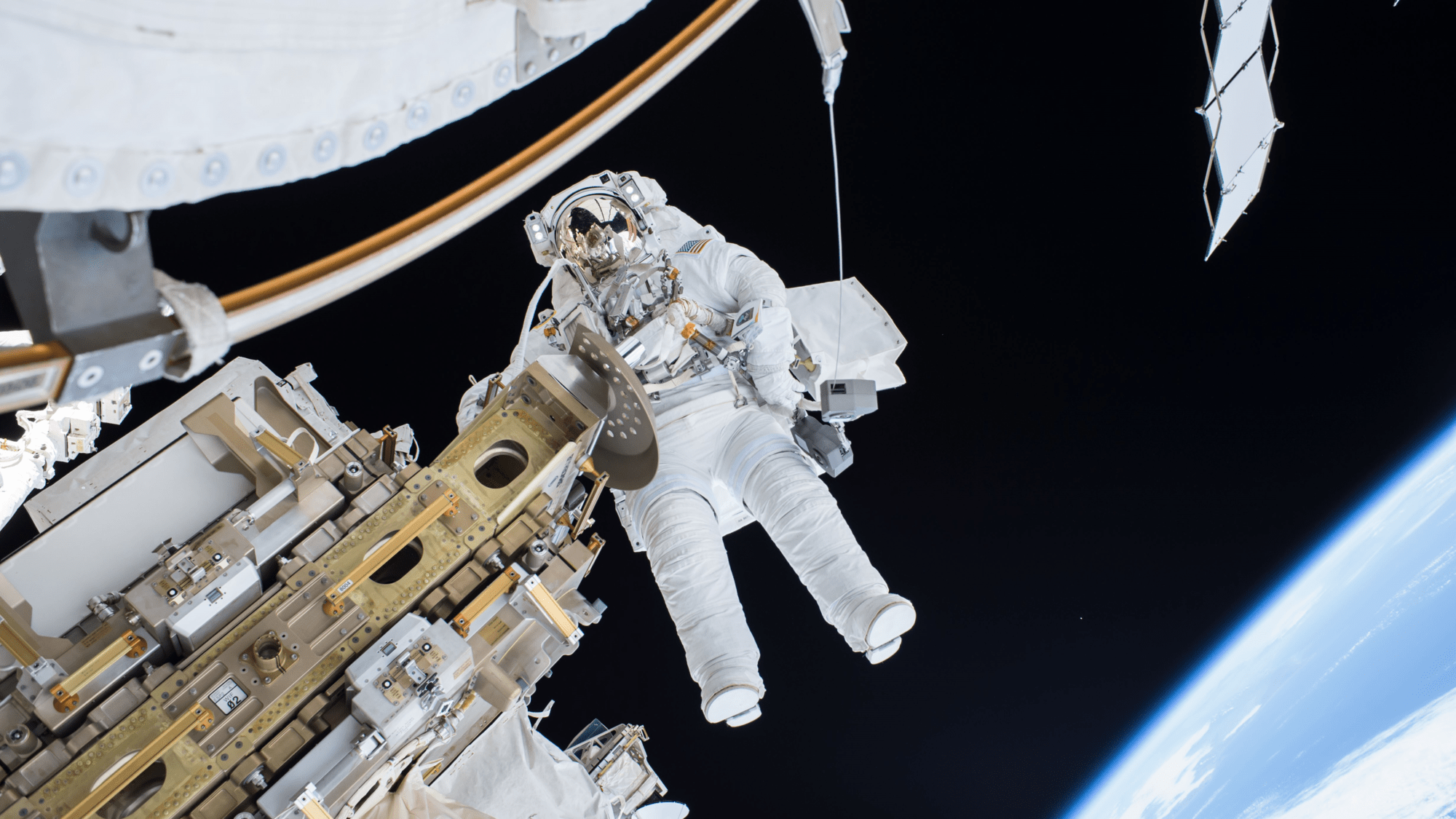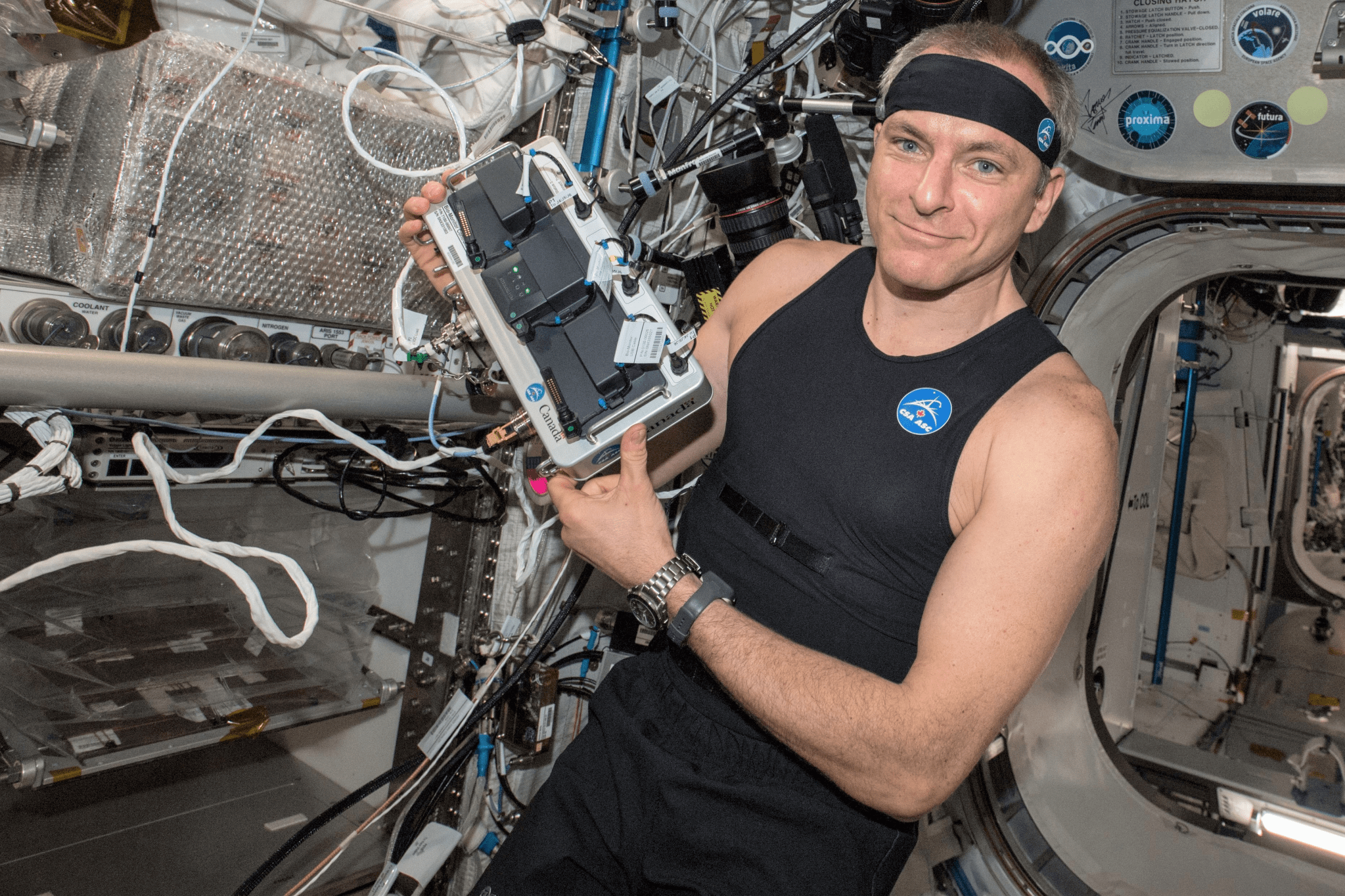The Marshall Star for January 25, 2023.
In This Week’s Star
- NASA Marshall to Commemorate Fallen Astronauts Jan. 26
- Message from the Center Director: Center Strategy All-Hands on Feb. 1
- Take 5 with Reggie Alexander
- NASA Validates Revolutionary Propulsion Design for Deep Space Missions
- Space Station: Experiments to Unlock How Human Bodies React to Long Space Journeys
- From Art to Space: Meet IXPE Flight Controller Kacie Davis
- NASA Recaps Webb Telescope Findings from AAS Meeting
- 50 States: Manufacturing Support and Welding
- Welding of Artemis III Core Stage Tank Dome Featured on ‘This Week at NASA’
NASA Marshall to Commemorate Fallen Astronauts Jan. 26
On Jan. 26, team members at NASA’s Marshall Space Flight Center are invited to gather in the lobby of Building 4221 to honor the courageous men and women of NASA who lost their lives in pursuit of scientific knowledge and human exploration of the cosmos.
The event will start at 9 a.m., and will include remarks by Marshall Director Jody Singer; Mike Hopkins, commander of the second crewed flight of NASA’s SpaceX Crew Dragon in 2021; and Bill Hill, director of Marshall’s Safety & Mission Assurance Directorate. A candle-lighting ceremony will follow.
“NASA’s Day of Remembrance reflects not just those lost in pursuit of the stars – but all those who carry on the mission of human space exploration in their memory,” Singer said. “We continue to expand the frontiers of science and discovery to honor the men and women of Apollo 1 and space shuttles Challenger and Columbia.”
NASA’s annual commemoration honors Apollo 1 astronauts Virgil “Gus” Grissom, Ed White Jr., and Roger Chaffee, lost during launch testing on Jan. 27, 1967; space shuttle Challenger astronauts Francis “Dick” Scobee, Michael Smith, Judith Resnik, Ronald McNair, Ellison Onizuka, Gregory Jarvis, and Christa McAuliffe, lost on takeoff on Jan. 28, 1986; and space shuttle Columbia astronauts Rick Husband, William McCool, Michael Anderson, David Brown, Kalpana Chawla, Laurel Clark, and Ilan Ramon, lost during post-mission reentry on Feb. 1, 2003. This year marks the 20th anniversary of the loss of the Columbia crew.
Learn more about NASA’s Day of Remembrance here.
Message from the Center Director: Center Strategy All-Hands on Feb. 1
Marshall Team,
Please join us in person for our next all-hands meeting on Feb. 1 at 11 a.m. in the Activities Building 4316. I’ll be joined by my leadership team to discuss Marshall’s strategy for the future. NASA is moving in an exciting new direction, and we are eager share how Marshall will prosper in this new environment.
You may submit questions through our new online Q&A tool, here. We listened to your feedback about the previous platform and believe this new tool will allow you to provide additional input on the subject areas you would like us to focus on.
We encourage in-person attendance, however additional information will be shared next week on how to join the all-hands virtually. Our leadership team looks forward to answering your questions and providing updates about our center’s future.
Jody
Take 5 with Reggie Alexander
By Daniel Boyette
When Reggie Alexander joined NASA three decades ago, the agency was looking into how to send humans to Mars. Making that historic mission a reality is a major reason why Alexander spends time mentoring and coaching young people.
“I still have the dream of people leaving footprints on the surface of Mars,” said Alexander, who has been manager of the Partnerships & Formulation Office at NASA’s Marshall Space Flight Center since 2019. “I know I likely will not be around to see it, and I don’t want that dream to end with my generation.”

Alexander credits his success to the many people who have mentored and prayed for him through the years. He sees it as his duty to share with students what it took for him to get where he is.
“I often see young people struggling to find their way and putting considerable effort into many different ventures to educate themselves and advance their career,” Alexander said. “I have found that success most often is tied to the qualities of the person and not necessarily their education. Good parents, great mentors, and 33 years of working here have taught me much. Sharing my knowledge and experience is the least that I could do.”
Question: What are your primary responsibilities as manager of the Partnerships & Formulation Office?
Alexander: My office supports the implementation of the center’s strategy to formulate new work opportunities. In doing so, we are a part of the process to assist developing strategic objectives as well as leading the exploration and pursuit of new business in some of those areas. We are also responsible for the processes to enable partnerships, largely in the form of Space Act Agreements, that use Marshall’s capabilities to help further NASA’s missions. We strive to maintain awareness of Marshall and agency technology and capability development, so that we can share them with potential partners and formulate new project ideas. We serve as the “front door” to Marshall for partnering opportunities, and we often use outreach opportunities to engage with the community.
Question: What excites you most about the future of human space exploration and your team’s role it?
Alexander: The most exciting thing to me is that we are leaving low-Earth orbit and developing the capabilities for a long-term presence beyond it. When I joined NASA in 1990, we were studying how to go to the Moon and leaving the Moon to go on to Mars. Many of the capabilities that we studied then were visions or dreams of what was possible, but now they are becoming a reality. I view my role as helping to look further into the future, to see beyond the reality that is continually being created based on those past visions. Partnerships are a very effective means to mature those ideas and leverage the talent and energy of companies, students, and other government agencies. Finding innovative approaches to grow strategic partnerships is one of my office’s primary roles.
Question: The way in which NASA conducts partnerships has evolved over the years. How is the current model beneficial to both the agency and its partners?
Alexander: The current model is beneficial to the agency and its partners in several ways. Shared vision and resources through partnerships promote efficient solutions to the myriad of challenges associated with new programs. It allows NASA to focus on the more challenging technical problems and reducing technical risks, while our partners can focus on the business of space and effective delivery of people and payloads to desired locations. Additionally, involving others through partnerships will strengthen our national capability, broaden our experience base, and help maintain NASA’s technical strength and capabilities.
Question: Who or what inspired you to pursue an education/career in engineering?
Alexander: I have always been kind of a technology geek, and while I was in high school I decided to major in architecture when I went to college. As fate would have it, a longtime friend of mine, Cedreck Davis, a Marshall retiree, asked if I had considered going to engineering school. At that time, I had no real idea what an engineer did, but as I dug into more, it became apparent to me that this would be a great option. Before I graduated from Mississippi State University, I had not considered myself as a candidate for NASA. But fate in the form of Cedreck showed up again when he asked had I considered applying to work for NASA. And, again, fate worked to my favor, and I was hired to work here. Looking back, I am not sure I would be happy doing anything else.
Question: What has been the proudest moment of your career?
Alexander: My proudest moment is when the Space Launch System launched. I was not a part of the program, but I can remember all the ideas and launch vehicle concept studies that eventually led to the vehicle that was finally built. I started my career in program development and spent a considerable amount of time in the Advanced Concepts Office. Much of what we studied did not make it to flight and often ended up in a file cabinet. So, to see a real vehicle lift off and to know that I had a part to play was incredibly fulfilling.
Boyette supports Marshall’s Office of Strategic Analysis & Communications.
NASA Validates Revolutionary Propulsion Design for Deep Space Missions
By Ramon J. Osorio
As NASA takes its first steps toward establishing a long-term presence on the Moon’s surface, a team of propulsion development engineers at NASA have developed and tested NASA’s first full-scale rotating detonation rocket engine, or RDRE, an advanced rocket engine design that could significantly change how future propulsion systems are built.
The RDRE differs from a traditional rocket engine by generating thrust using a supersonic combustion phenomenon known as a detonation. This design produces more power while using less fuel than today’s propulsion systems and has the potential to power both human landers and interplanetary vehicles to deep space destinations, such as the Moon and Mars.
Engineers at NASA’s Marshall Space Flight Center and primary collaborator IN Space LLC, located in West Lafayette, Indiana, are confirming data from RDRE hot fire tests conducted in 2022 at Marshall’s East Test Area. The engine was fired over a dozen times, totaling nearly 10 minutes in duration.
The RDRE achieved its primary test objective by demonstrating that its hardware – made from novel additive manufacturing, or 3D printing, designs and processes – could operate for long durations while withstanding the extreme heat and pressure environments generated by detonations. While operating at full throttle, the RDRE produced over 4,000 pounds of thrust for nearly a minute at an average chamber pressure of 622 pounds per square inch, the highest pressure rating for this design on record.
The RDRE incorporates the NASA-developed copper-alloy GRCop-42 with the powder bed fusion additive manufacturing process, allowing the engine to operate under extreme conditions for longer durations without overheating.
Additional milestones achieved during the test include the successful performance of both deep throttling and internal ignition. This successful demonstration brings the technology closer to being used with future flight vehicles, enabling NASA and commercial space to move more payload and mass to deep space destinations, an essential component to making space exploration more sustainable. Because of NASA’s recent success with the RDRE, follow-on work is being conducted by NASA engineers to develop a fully reusable 10,000-pound class RDRE to identify performance benefits over traditional liquid rocket engines.
RDRE is managed and funded by the Game Changing Development Program in NASA’s Space Technology Mission Directorate.
Osorio, a public affairs officer, supports Marshall’s Office of Strategic Analysis & Communications.
Space Station: Experiments to Unlock How Human Bodies React to Long Space Journeys
Through Artemis, NASA astronauts are returning to the Moon in preparation for one day going to Mars. To better prepare astronauts for these long journeys, scientists need to know: How do extended durations in space change the human body?
Astronauts flying to the International Space Station can now volunteer for a suite of experiments that aim to help scientists learn more. Together, these experiments are called the Complement of Integrated Protocols for Human Exploration Research, or CIPHER.
“CIPHER is the first study to integrate multiple physiological and psychological measures, giving us a chance to assess the whole human response to time spent in space,” CIPHER project scientist Cherie Oubre explains. “As more astronauts head to space through Artemis and other programs, we hope to learn more about how the various systems of the body, such as the heart, muscles, bones, and eyes, adapt to long-term spaceflight.”
Through CIPHER, astronauts participate in an integrated set of 14 studies sponsored by NASA and international partner agencies. To get meaningful results, CIPHER scientists will study up to 30 astronauts, evenly divided over three mission-length categories:
- Short (less than 3.5 months in space)
- Standard (between 3.5 and eight months in space)
- Extended (more than eight months in space)
These research studies will monitor the health of astronauts before, during, and after their missions, and together address the following themes.
Bone and Joint Health
Studies show that astronauts lose bone density and muscle quality faster in space than on Earth. Calcium lost from bone ends up in their blood and urine. This loss of bone density may affect how skeletal systems support muscles and organs in space and soon after landing back on Earth.
Astronauts will:
- Undergo scans to measure bone density, skeletal health, and muscle quality surrounding bones and joints; and
- Collect blood and urine periodically before, during, and after their missions.
Scientists will:
- Examine whether the rate of bone and muscle loss stays constant, slows down, or even stops beyond six-month missions; and
- Determine what sort of health risks, if any, these pose.
Brain and Behavior
Fluids in the brain shift due to low gravity in space, and long-duration spaceflight may slightly alter brain structure. These changes could affect how the brain processes spatial information and, in turn, affect crew performance.
Astronauts will:
- Complete cognitive tests,
- Perform spatial cognition tasks using virtual reality,
- Use a computer to measure proficiency in controlling a robotic arm, and
- Undergo MRI scans while doing cognitive tests.
Scientists will:
- Examine how brain activity before missions differs from brain activity after missions,
- Pinpoint patterns dependent on mission duration, and
- Assess how changes in performance of cognitive, spatial cognition, and operational tasks relate to changes in brain structure and function.
Cardiovascular
Long-duration spaceflight may lead to stiffer arteries and increase the risk of heart disease. Scientists want to know how these changes play out during and after extended missions.
Astronauts will:
- Complete CT, MRI, and ultrasound imaging of the heart, surrounding organs and muscles, and blood vessels,
- Wear a shirt that measures heart rate and respiration across two days, and
- Take periodic blood pressure measurements.
Scientists will:
- Tease out patterns within and across mission durations to provide clear, objective indicators of cardiovascular health, and
- Examine whether the low-gravity affects organs, muscles, and vessels near the heart.
Exercise
Exercise is a well-known strategy to counter bone and muscle loss in space. Researchers want to understand whether exercise is an effective strategy for maintaining astronaut health in long-duration spaceflight.
Astronauts will:
- Test muscle strength and endurance throughout their missions using the station’s exercise equipment,
- Track their nutrition and sleep habits, and
- Navigate through an obstacle course after they land back on Earth, while at times wearing spacesuits connected to NASA’s Active Response Gravity Offload System, or ARGOS, to simulate Martian gravity.
Scientists will:
- Evaluate crews’ abilities to carry out specific exercises over time, and
- Evaluate how soon and how well crews can perform critical tasks in different gravities.
Sensorimotor
Many astronauts experience dizziness and disorientation when they arrive at the station and when they return to Earth. However, on future missions to Mars, ground support won’t be readily available to assist astronauts when they land on the Red Planet’s surface. Understanding factors that may influence how long these symptoms last will be important to mission success.
Astronauts will:
- Record their eye, head, and body movements using specialized techniques, and
- Fill out surveys on how they perceive motion.
Scientists will:
- See whether mission duration influences how long it takes to adapt to a different gravity level, and
- Investigate the reasons behind changes in balance and the ability to adapt to different gravities.
Vision
Because low-gravity conditions shift the body’s fluids toward the head, spaceflight can alter the structure and function of the eyes and the brain. This, in turn, may influence how astronauts process visual information on long missions, which could affect their performance.
Astronauts will:
- Participate in MRI and eye imaging scans,
- Perform vision tests, and
- Assess eye pressure and how the retina responds to light.
Scientists will:
- Evaluate eye changes for each mission duration, and
- See how the structure of astronauts’ brains change after their missions, and how such changes affect vision.
Biomarkers
Samples of astronaut’s blood and urine can provide insights into crew health. For instance, stress hormones reveal how the immune system reacts to spaceflight. Scientists want to know whether any changes to the human body induced by long-duration space travel come with indicators that can also be detected in blood and urine.
Astronauts will:
- Provide blood and urine samples before, during, and after spaceflight, and
- Complete questionnaires regarding health and exercise habits.
Scientists will:
- Examine blood and urine for potential indicators of changes to cartilage health, inflammation and immune function, kidney health, brain structure and function, spatial cognition, performance of operational tasks, risk of cardiovascular disease, and more; and
- Investigate the interplay between mission length, DNA damage responses, and post-mission recovery of telomeres – the caps at the ends of chromosomes that shorten as we age but may lengthen in space before rebalancing themselves back on Earth.
CIPHER also includes a long-running study called Spaceflight Standard Measures, which collects a core set of information on as many crew members as possible. This core set includes metrics about the crew member’s sleep, cognition, biomarkers, immune function, microbiome, and more.
In addition to answering research questions central to each study, CIPHER takes an integrated approach – data across the CIPHER investigations will be evaluated to identify patterns and gain a deeper understanding of how the human body reacts to long durations in space. For instance: Do changes to the various systems of the body plateau across the board after specific amounts of time spent in space? Do changes in one system herald changes in another?
“CIPHER is an all-encompassing, total-body approach to learning how humans adapt to spaceflight,” says Oubre. “Insights gained through CIPHER may well be key to enabling humans to remain healthy while exploring the Moon, Mars, and beyond.”
NASA is leading a return to the Moon for long-term exploration. Through the Artemis missions, NASA will land the first woman and first person of color on the Moon, using innovative technologies to explore more of the lunar surface than ever before. Lessons learned on and around the Moon will prepare NASA for the next giant leap: sending astronauts to Mars.
NASA’s Human Research Program pursues methods and technologies to support safe, productive human space travel. Through science conducted in laboratories, ground-based analogs, and the International Space Station, this team scrutinizes how spaceflight affects human bodies and behaviors. Such research drives NASA’s quest to innovate ways that keep astronauts healthy and mission-ready as space travel expands to the Moon, Mars, and beyond.
The Payload Operations Integration Center at NASA’s Marshall Space Flight Center operates, plans, and coordinates the science experiments onboard the space station 365 days a year, 24 hours a day.
From Art to Space: Meet IXPE Flight Controller Kacie Davis
By Rick Smith
If the secret to happiness is pursuing and achieving goals that bring contentment to both the heart and the intellect, then Kacie Davis, a flight controller for NASA’s Imaging X-ray Polarimetry Explorer (IXPE), is living her best life – and she took an unexpected path to get there.
Initially, it wasn’t the Leawood, Kansas, native’s intent to pursue a STEM career – a path which led her to a seat on console in NASA’s partner organization, the Laboratory for Atmospheric and Space Physics (LASP) on the University of Colorado-Boulder campus.
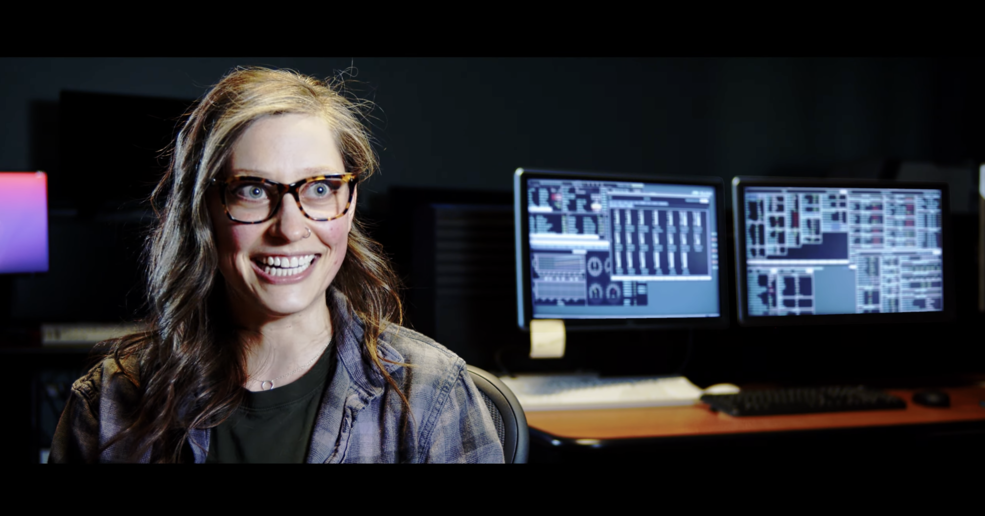
Davis originally went to school to refine her art skills, earning undergraduate degrees in drawing and photography from Kansas State University in Manhattan, Kansas, and a master’s in studio art from the University of Connecticut in Storrs. Along the way she jockeyed a register at a videogame chain store to pay her rent, taught drawing and multimedia courses at U-Conn, and earned a first-degree black belt in taekwondo.
But some elusive question kept her searching for her professional niche. She had always created “abstract expressionist art that had a tendency to echo what space images look like,” she said. “I kept hearing that in my art critiques – and it slowly piqued my interest in outer space and the universe.” That led her to pursue an astronomy degree at CU-Boulder.
“It felt like this is a place where people get stuff done, and keep getting things done,” she said. “It was inspiring.”
It wasn’t an easy path for an artist whose last mathematics courses had been at least a decade earlier. “I’d never taken physics!” she said. “At first, I wasn’t following a lot of what my classmates and professors were talking about.”
But the science spurred her on – along with the growing desire to help answer some of the oldest universal questions known to humanity, to aid in unlocking secrets of the most powerful and mysterious space phenomena: black holes, quasars, and more. She earned a bachelor’s degree in astronomy in 2020, and became an IXPE flight controller in 2021.
Today, Davis spends much of her time as a flight controller monitoring and directing IXPE’s work as the spacecraft observes and tracks polarized X-rays emitted by powerful celestial objects. Imaging in space is often a one-dimensional process, snapping a photograph and observing the results, but IXPE delves deeper, she said. IXPE measures X-ray polarization, a property of light related to the orientation of the waves’ vibrations.
“Polarimetry is two-dimensional, measuring the direction of X-ray photons flowing away from their source, aiding us in determining brightness and the path of travel, where an object came from and where it might be heading,” she said. “IXPE can even help us measure the spin of black holes – something we’ve never directly measured before. How exciting is that!”
She also regularly works with undergraduate student trainees in the LASP, helping them hone the mission-ops skills that will, in time, enable them to chair a flight controller’s post of their own.
Both aspects of the work, she said, “make me feel like I’m contributing to finding answers to the unknown – which is what I’d been searching for in art. That is quite rewarding.”
In the first months of 2022, Davis was thrilled to be part of the team that helped IXPE acquire its first target of study, Cassiopeia A – the remains of a star that exploded in the 17th century. Ten light-years in diameter, “Cas-A” is a bright ball of superheated gas and glowing cosmic ray particles some 11,000 light-years from Earth.
“We’ve looked at Cas-A a million times, but IXPE showed us more than we’d ever seen before,” Davis said. “It’s a brand-new set of eyes, looking at the universe in a completely new way.”
Not a bad way to describe Davis herself.
Smith, a Manufacturing Technical Solutions employee, supports Marshall’s Office of Strategic Analysis & Communications.
NASA Recaps Webb Telescope Findings from AAS Meeting
Scientists shared new findings and updates from NASA’s James Webb Space Telescope, also called Webb or JWST, at press conferences during the 241st meeting of the American Astronomical Society (AAS) in Seattle, from Jan. 8 to 12.
Scientists from NASA and universities shared Webb results from multiple different scientific disciplines, ranging from the early universe and galaxy evolution to exoplanet atmospheres and young star formation.
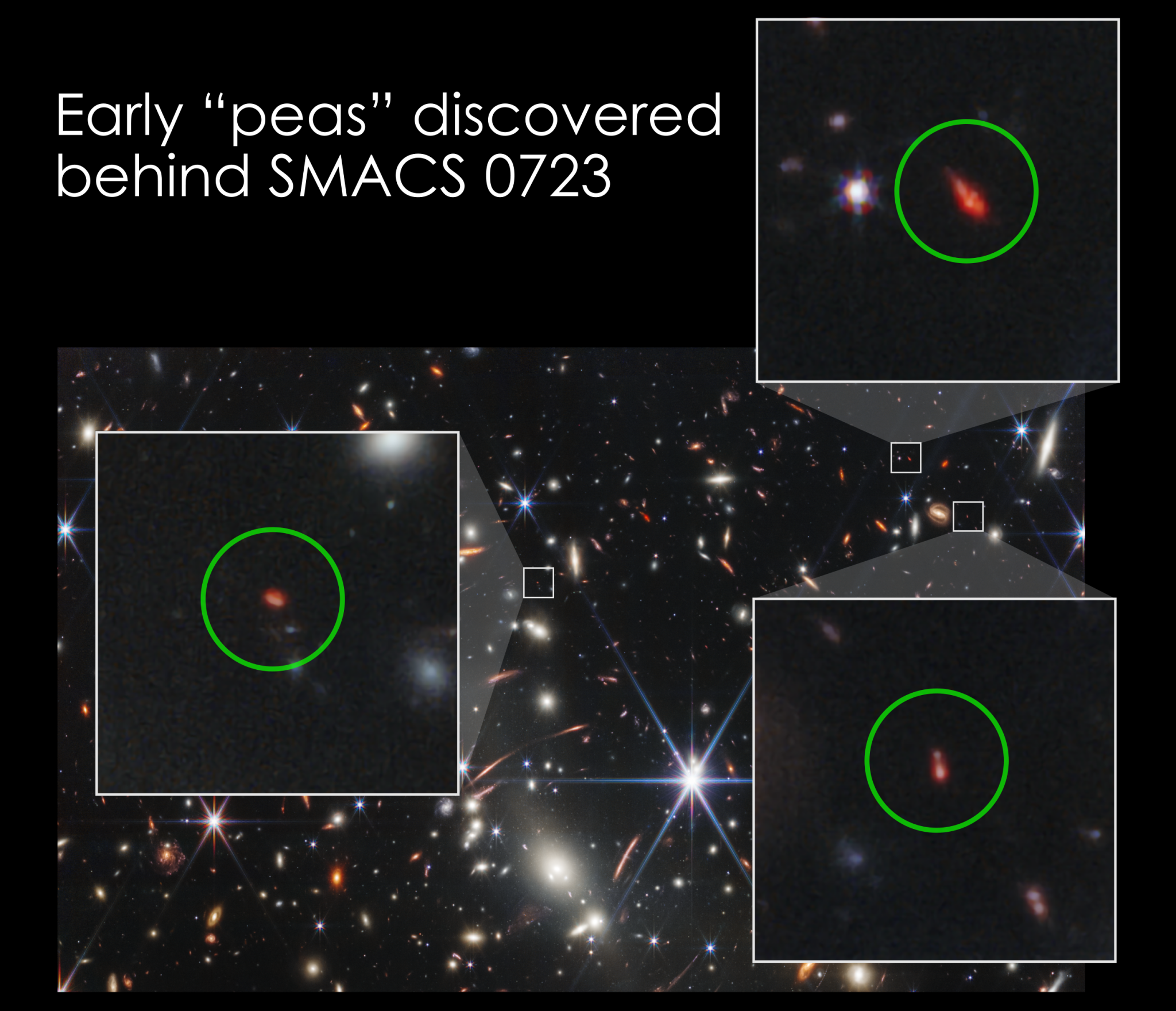
An Early Look at the Evolution of Galaxy Structure at z = 3-9 with JWST
Scientists analyzed the morphologies, or visual appearance and structure, of 850 distant galaxies from observations with Webb’s Near Infrared Camera (NIRCam) instrument and compared them to their morphologies based on previous Hubble Space Telescope imaging. The term “z” denotes the redshift of the galaxies observed and is a measure of the distance of the object. As part of the Cosmic Evolution Early Release Science (CEERS) Survey, scientists conducted visual classifications of each galaxy as well as quantitative measurements of galaxy structure. Overall, the findings showed galaxies with a wide diversity of morphologies out to the highest redshifts, and many that have different morphologies than previously seen with Hubble. More here.
Finding Peas in the Early Universe with JWST
A new analysis of distant galaxies imaged by Webb shows that they are extremely young and share some remarkable similarities to “green peas,” a rare class of small galaxies that still exist in our cosmic backyard. Green pea galaxies appear as small, round, unresolved dots with a distinctly green shade. Researchers made connections between far-off galaxies from Webb’s First Deep Field and these nearby galaxies, which can be studied in more detail. More here.
Zooming in on the Shocked and Turbulent Intergalactic Medium in Stephan’s Quintet with JWST and ALMA
Shockwaves resulting from the violent collision between an intruder galaxy and Stephan’s Quintet are helping astronomers understand how turbulence influences gas in the intergalactic medium. New observations with Webb and the Atacama Large Millimeter/submillimeter Array (ALMA) revealed that a sonic boom several times the size of the Milky Way has kickstarted a recycling plant for warm and cold molecular hydrogen gas. What’s more, scientists uncovered the break-up of a giant cloud into a fog of warm gas, the possible collision of two clouds forming a splash of warm gas around them, and the formation of a new galaxy. More here.
A Large Number of Candidate Galaxies at z ~ 11-20 Revealed by the JWST Early Release Observations
Using data from Webb’s First Deep Field, the SMACS 0723-73 field, scientists found a total of 87 candidate galaxies at a redshift, or “z,” of greater than 11. This is the first large sample of candidate galaxies at such high redshifts. According to the researchers, such a large number of candidate objects at such high redshifts was not expected from previously favored predictions and demands further investigation. More here.
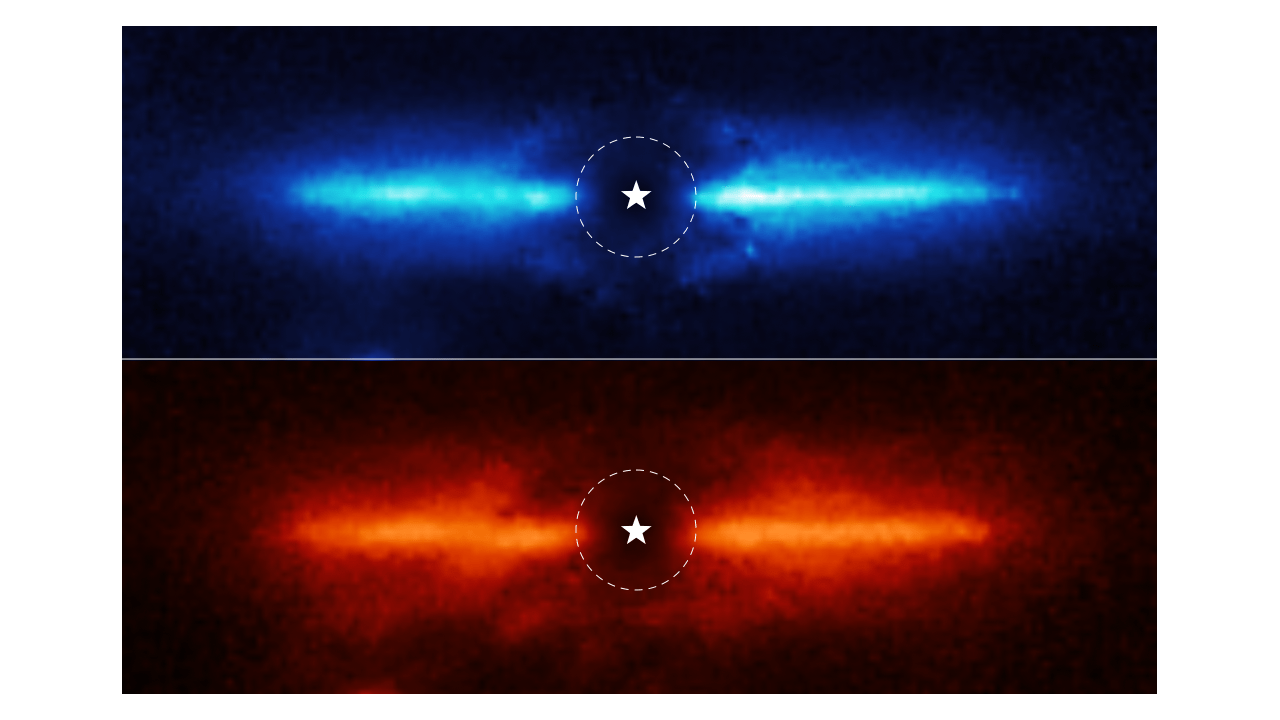
Unveiling the Dusty Hearts of Galaxies with JWST
Hosting an active supermassive black hole surrounded by a star-forming ring at its center, nearby Seyfert galaxy NGC 7469 presents an ideal laboratory for investigating the interplay between black hole and its host galaxy in detail. The high-resolution mid-infrared spectroscopic capability of Webb enabled not only a clear view into this phenomenon through the dusty veil, but it also, for the first time, allowed scientists to map and trace the motion of cool molecular and ionized gas species close to the active nucleus. This study revealed a highly ionized outflow driven by the central supermassive black hole in NGC 7469 that is also heating the nearby interstellar medium via shocks and destroying small dust grains, demonstrating the power of the telescope in revealing the physics of feedback processes underlying the co-evolution of black holes and galaxies. More here.
Constraints on the Presence of a Rocky Exoplanet Atmosphere from a JWST Transmission Spectrum
Researchers confirmed an exoplanet, a planet that orbits another star, using Webb for the first time. Formally classified as LHS 475 b, the planet is almost exactly the same size as our own, clocking in at 99% of Earth’s diameter.
The team chose to observe this target with Webb after carefully reviewing targets of interest from NASA’s Transiting Exoplanet Survey Satellite (TESS), which hinted at the planet’s existence. Webb’s Near-Infrared Spectrograph (NIRSpec) captured the planet easily and clearly with only two transit observations. More here.
Early Imaging Results with JWST: Young Star Formation in NGC 346
NCG 346 is located in the Small Magellanic Cloud (SMC), a dwarf galaxy close to our Milky Way. The SMC contains lower concentrations of elements heavier than hydrogen or helium, which astronomers call metals, compared to the Milky Way. Since dust grains in space are composed mostly of metals, scientists expected there would be low amounts of dust, and that it would be hard to detect. New data from Webb reveals the opposite. More here.
50 States: Manufacturing Support and Welding
All 50 U.S. states play a role in returning humans to the Moon. Technicians across America are manufacturing SLS and Orion for future Artemis missions. Watch to learn more. (NASA)
Welding of Artemis III Core Stage Tank Dome Featured on ‘This Week at NASA’
Teams at NASA’s Michoud Assembly Facility recently completed welding of the Space Launch System (SLS) core stage liquid oxygen tank dome for Artemis III. The work is featured in “This Week @ NASA,” a weekly video program broadcast on NASA-TV and posted online.
The liquid oxygen and the liquid hydrogen tanks on the SLS core stage hold a combined 733,000 gallons of propellant to launch the SLS and the Orion spacecraft into space. NASA’s Marshall Space Flight Center manages Michoud and oversees the SLS Program.
View this and previous episodes at “This Week @NASA” on NASA’s YouTube page.



























